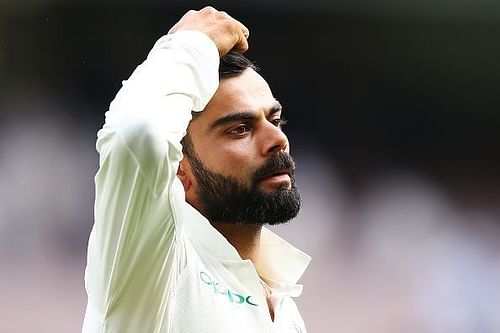
Australia vs India 2018-19, 3rd Test: Why Virat Kohli was wrong in not enforcing the Follow On

There has been some heated debate among fans and experts alike after captain Virat Kohli decided not to enforce the follow-on. The Indian bowlers, led by the ever-improving Jasprit Bumrah, skittled out Australia for just 151 runs, giving India a first innings lead of 292 runs.
There is definitely some merit in the school of thought that believes Kohli should have enforced the follow-on. First and foremost, the Indian bowlers did not have to go through a grind to take the 10 Aussie wickets, unlike their Australian counterparts.
They had to bowl just 66.5 overs in the Australian first innings, more than 100 overs fewer than what the Australian bowlers had to bowl during the Indian innings. Out of these, the two spinners, Jadeja and Vihari bowled a whopping 28 overs, which meant the three fast bowlers were required to bowl only 38.5 overs.
Thus, the workload of the Indian bowlers, especially the pace bowlers, was quite minimal. They were all relatively fresh. If the Indian captain had enforced the follow-on, the fast bowlers who were on fire at the time would have most certainly caused havoc on an Australian batting line-up, shaken by the way their first innings folded. And they would have got a night’s rest after a short burst in the last session of the third day.
Secondly, a lead of 292 runs on this difficult pitch where run scoring is extremely difficult, as has been seen from the way the two sides batted in their first innings, is more than handy. Even if the Australians had somehow summoned the required discipline and application to occupy the crease, it would have taken them at least 110 to 120 overs to come close to the target. That meant they would have been able to surpass the Indian total, a near-impossible proposition in itself, either on the fifth day morning or towards the fag end of the fourth day.
So, there was no question of Australia setting India a target, let alone a difficult target, to chase in the fourth innings. Moreover, with the prediction of rain on days four and five, there is a chance that we may not get all the stipulated overs on the last two days.
By batting again, the Indian team is only helping Australia's cause by taking away some precious time from the game. The Australian bowlers may tire out due to Kohli’s decision, but the fact is their morale would be much higher now after taking five top-order Indian wickets for next to nothing. If Kohli had enforced the follow-on, they would have gone to Sydney knowing that they could not take even take ten Indian wickets in the entire match even after bowling for almost 170 overs.
Moreover, instead of facing the lethal Indian bowling in the last session of the third day, the Australian batsmen have now got a lot of time to regroup. As Paine and co. have shown in the recent past in UAE against Pakistan, this Australian batting line-up certainly has it in them to bat for a long period of time.
Even now, India is still in the driver’s seat, and may still win the Test by a big margin. But by not enforcing the follow-on, Kohli has given Australian bowlers some much-needed confidence and some respite and hope to the Australian batsmen.